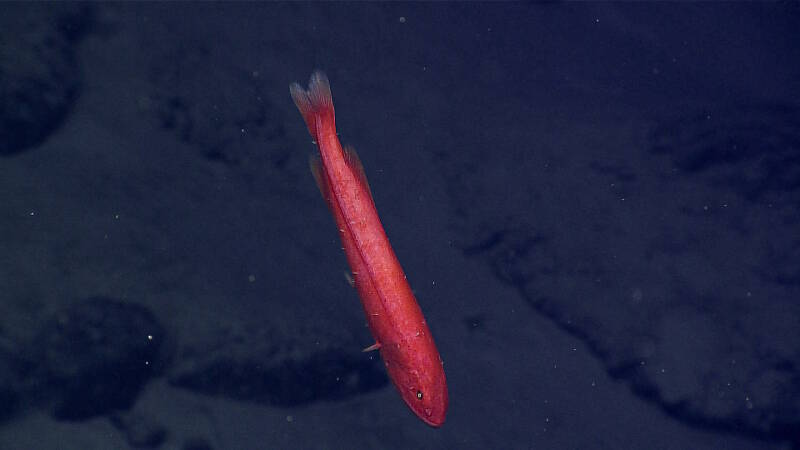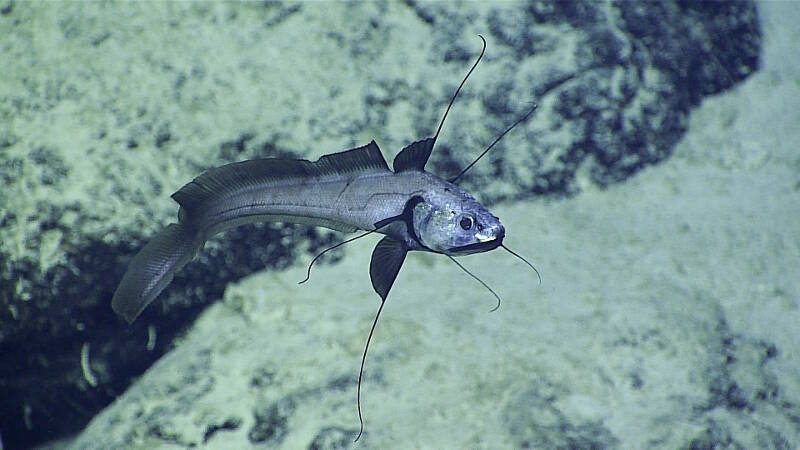This dive was on an unnamed seamount and the sixth dive within the Phoenix Islands Protected Area (PIPA). The dive spanned from 1,323 to 982 meters depth, beginning on a sedimented slope with scattered boulders and a moderate current, flowing from north to south. Continuing upslope, the seafloor transitioned from large boulders and blocks, interspersed with sediment to large boulders and continuous rock pavements with thin sediment drape. Along the steep slope, the rock had a crustal appearance that had fallen in several areas, revealing the smooth, underlying pavement. Fishes encountered on the dive included cusk eels, rattails, deep-sea spiny eels, tripod fish, velvet whalefish, brotula, oreo fish, an arrow-tooth eel, and cutthroat eels. Yellow plexaurids, bottlebrush chrysogorgids, and large primnoids were observed on large rocky slabs. Other corals observed along the steep slope included sea pens, colonial scleractinians, cup corals, bamboo whips, precious corals, black corals, and octocorals. Several glass sponges were observed during the first part of the dive from about 1,323 to 1,200 meters, covered with associates, including ctenophores, crinoids, ophiuroids, and shrimp. Unknown sea stars were observed feeding on these sponges. We also encountered sea stars feeding on a very large primnoid, with bare coral skeleton present in proximity to the sea star. Other sponges included large vase-like sponges and other globe-shaped glass sponges. Additional invertebrates observed on the exposed rock surfaces and on the sediment surface included sea cucumbers, sea stars, a sea lily, anemones, shrimps, hermit crab, a dandelion benthic siphonophore, a sea urchin, and a homolid crab with a plexaurid hat on a large octocoral. Next up is the deepest dive of this expedition in an unknown trough in PIPA that spans the hadal depths.This dive site is one of the few hadal zones in the Pacific not associated with a known subduction zone or trench.

